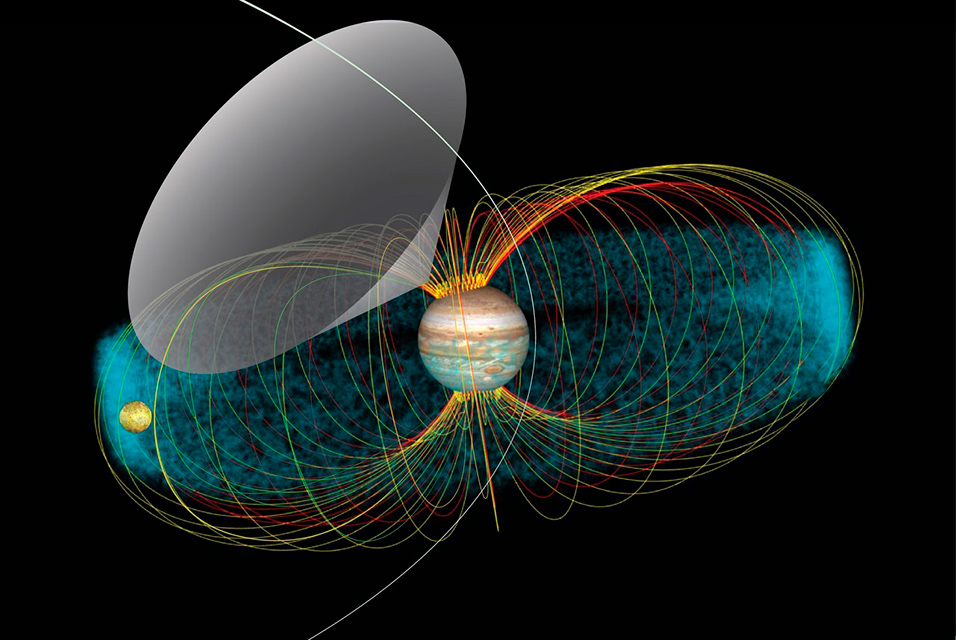WASHINGTON, DC.- The Juno Waves instrument "listened" to the radio emissions from Jupiter's immense magnetic field to find their precise locations.
By listening to the rain of electrons flowing onto Jupiter from its intensely volcanic moon Io, researchers using
NASA's Juno spacecraft have found what triggers the powerful radio emissions within the monster planet's gigantic magnetic field. The new result sheds light on the behavior of the enormous magnetic fields generated by gas-giant planets like Jupiter.
Jupiter has the largest, most powerful magnetic field of all the planets in our solar system, with a strength at its source about 20,000 times stronger than Earth's. It is buffeted by the solar wind, a stream of electrically charged particles and magnetic fields constantly blowing from the Sun. Depending on how hard the solar wind blows, Jupiter's magnetic field can extend outward as much as two million miles (3.2 million kilometers) toward the Sun and stretch more than 600 million miles (over 965 million kilometers) away from the Sun, as far as Saturn's orbit.
Jupiter has several large moons that orbit within its massive magnetic field, with Io being the closest. Io is caught in a gravitational tug-of-war between Jupiter and the neighboring two of these other large moons, which generates internal heat that powers hundreds of volcanic eruptions across its surface.
These volcanoes collectively release one ton of material (gases and particles) per second into space near Jupiter. Some of this material splits up into electrically charged ions and electrons and is rapidly captured by Jupiter's magnetic field. As Jupiter's magnetic field sweeps past Io, electrons from the moon are accelerated along the magnetic field toward Jupiter's poles. Along their way, these electrons generate "decameter" radio waves (so-called decametric radio emissions, or DAM). The Juno Waves instrument can "listen" to this radio emission that the raining electrons generate.
The researchers used the Juno Waves data to identify the precise locations within Jupiter's vast magnetic field where these radio emissions originated. These locations are where conditions are just right to generate the radio waves; they have the right magnetic field strength and the right density of electrons (not too much and not too little), according to the team.
"The radio emission is likely constant, but Juno has to be in the right spot to listen," said Yasmina Martos of NASA's Goddard Space Flight Center in Greenbelt, Maryland, and the University of Maryland, College Park.
The radio waves emerge from the source along the walls of a hollow cone aligned with and controlled by the strength and shape of the magnetic field of Jupiter. Juno receives the signal only when Jupiter's rotation sweeps that cone over the spacecraft, in the same way a lighthouse beacon shines briefly upon a ship at sea. Martos is lead author of a paper about this research published in June 2020 in the Journal of Geophysical Research: Planets.
Data from Juno allowed the team to calculate that the energy of the electrons generating the radio waves was far higher than previously estimated, as much as 23 times greater. Also, the electrons do not necessarily need to come from a volcanic moon. For example, they could be in the planet's magnetic field (magnetosphere) or come from the Sun as part of the solar wind, according to the team.










